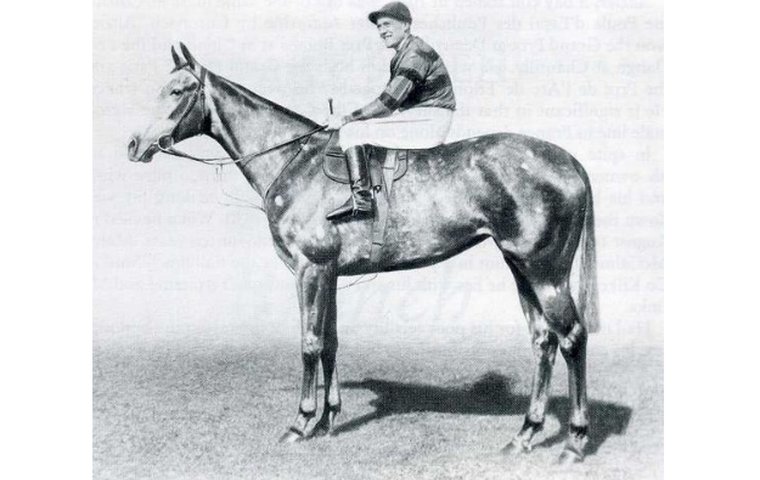
It was once the go-to race for the best older horses in Britain. For more than a century, 4-year-old campaigns for Derby winners and other outstanding Classic horses were built around a shot at the Gold Cup, over 2 miles and 4 furlongs on the third day of Royal Ascot. This week’s renewal will still be one of the highlights of the royal meeting, but in prestige terms this has long been an event with a very different profile, as bloodstock journalist Janet Hickman reports.
The Gold Cup retains its place as Royal Ascot's showpiece, yet it has long been a backwater in bloodstock terms. The best horses go for other G1 events at the meeting, and the stallion potential on show is limited to the jumps sector.
Why has such a notable race, with a great history, lost all influence over the development of the breed? Two words: speed and fashion.
The Gold Cup, first run in 1807, has been over 2 1/2 miles (4,023 metres) for all but one of its editions. At the time of its inauguration, this kind of distance was in vogue, regarded as a stern and good test of the Thoroughbred. Even a century later, a horse enhanced its reputation by winning the race. But during the succeeding decades, the focus of bloodstock turned to speed.
Key moments in this included the emergence of fantastic 2-year-old The Tetrarch (foaled 1911) and his incredibly fast daughter Mumtaz Mahal (1921), known as “the flying filly.” Her owner was the Aga Khan, a highly influential breeder who famously referred to the need to avoid “throwing the baby [speed] out with the bathwater.”
Another influential horse of that era was Phalaris (1913), a high-class 2-year-old and top-class sprinter. He became a phenomenally important sire at the time, and his influence has become even greater in retrospect since he is the tail-male ancestor of Northern Dancer and Nasrullah, and thus a dominant factor in modern sire lines across the world.
Under the influence of horses such as Phalaris, running times continued to tumble with the injection of speed. Races at a mile and a half and shorter grew in stature, and the racing programme made the corresponding shift.
Two key moves were the instigation of the Prix de l'Arc de Triomphe at Longchamp Racecourse in 1920 and the King George VI and Queen Elizabeth Stakes at Ascot in 1951. Both races are over 1 1/2 miles and are designed to pit the best 3-year-olds against older generations. As a result, top-class Classic performers who once would have been aimed for the Gold Cup at age 4 were rerouted to these iconic, valuable races over middle distances.
There was a knock-on effect in the breeding industry. Formerly, durability and stamina allied to class were prized in the stallion. Now, while durability was still desirable, speed became weighted more in the equation to the point where it approached becoming its most important term. A breeder, faced with a miler and a stayer of equal rank, now placed his stock in the former.
As stamina and durability gave way to speed and precocity, so followed the decline of the owner-breeder and the rise of the commercial operator.
Racing throughout the 18th and 19th centuries had been a vehicle for the owner-breeder – always vastly wealthy, and generally from the nobility – to prove the superiority of his stock. Match races over several miles once were common, so the Gold Cup had been the natural target for the summit of owner-breeders' ambitions and the showcase of the prized facets they possessed.
But wars, death duties, dissolute eldest sons, and increasing emancipation played their part in reducing their power, wealth, and influence.
Crucially, owner-breeders had been able to follow their whim in shaping the Thoroughbred. The commercial breeders who grew up to fill the void had to keep an eye on fashion. And speed (allied with precocity) was preferred because it offered more to the market. Now, a miler or 12-furlong performer boosted his reputation if he could excel at shorter distances, and actually tainted himself with a notable performance over further, even though it was nothing to his detriment as a progenitor of successful stock.
And this is the story of the Gold Cup’s declining influence as a showcase for future flat breeding stock. It was no longer the beau ideal for bloodstock ambitions.
However, the race and its winners still constitute a rich history, and it isn't hard to identify its legacy when you look through the pedigrees of major winners nowadays.
Among the 2014 Epsom Derby and Oaks principals, you'll see the name of 1949 Gold Cup winner Alycidon lurking. He is sire of Derby winner Australia's fourth dam Samanda, Derby runner-up Kingston Hill's sixth dam Alice Delysia, and he also appears in the pedigree of Oaks second Tarfasha.
Remarkably, American racing in the 20th century also has some strong Gold Cup connections. Triple Crown winners Omaha (1935) and Count Fleet (1943) both have links. Omaha was second to Quashed in the 1936 Ascot marathon, while Count Fleet's sire Reigh Count - himself a Kentucky Derby winner in 1928 - was second to dual Gold Cup winner Invershin in 1929. And Triple Crown near-miss Thunder Gulch (1995) numbers the Irish Oaks winner Shoot A Line among his grandparents, and she was second to Ardross at Ascot in 1981.
All these pedigrees - and many more nowadays - feature the name Cyllene, the grandsire of Phalaris, also the father-and-son team of Bayardo and Gainsborough, plus the great St Simon. All are Gold Cup winners.
The Ascot Gold Cup can no longer exert its influence over the breed directly, but its legacy remains. Thoroughbreds need some measure of stamina at all distances and the durability to bolster their brilliance with a sustained existence at the top level. No race emphasises these qualities better.


